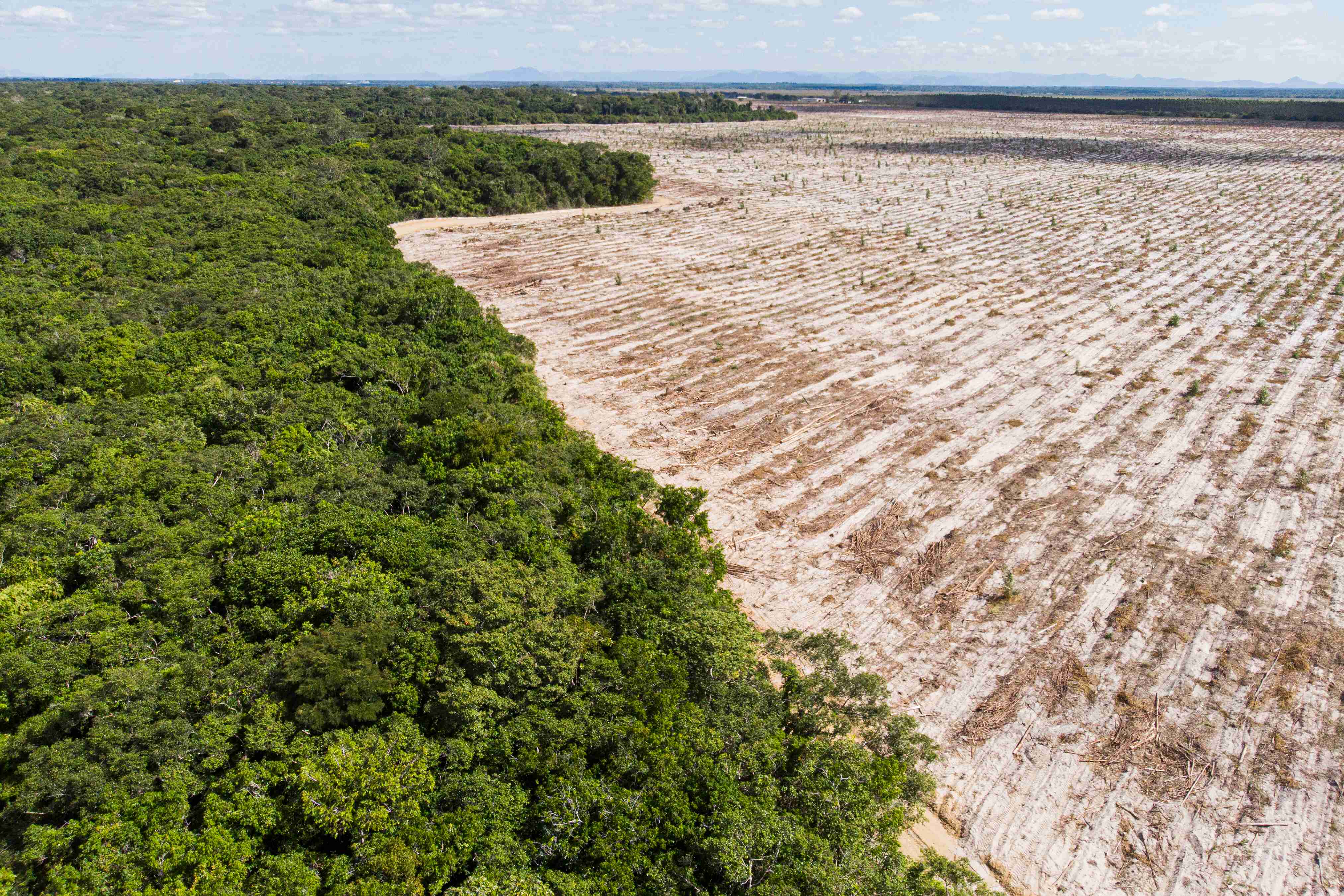The role of anti money laundering monitoring in ESG compliance

While Environmental, Social, and Governance (ESG) practices have roots in the early efforts of pro bono environmental and human rights enthusiasts, those on the other side of the ESG law are anything but. After drug trafficking and counterfeit goods, environmental crime is the third-most profitable global criminal activity. Still, authorities often treat it like a petty crime. But if left unchecked, this form of illegal activity could affect the planet and every living being, from people to wildlife.
The impact of ESG-related crime is consequential — it goes beyond the monetary costs and includes damage to the environment, human rights, public health, and socio-economic development.
As destructive as it is in its own right, what exacerbates the problem around these crimes is that they often converge with other forms of criminal activity, including money laundering, since offenders need to cover up the deficiencies and hide illegal activity.
As a result, governments around the world recognise this devastating impact of ESG crime, increasingly taking action to dismantle the organised crime groups and corrupt actors exploiting the planet and people for their personal gain.
The real face of ESG crime
Environmental crime includes devastating activities that violate environmental legislation and cause significant damage or risk to the environment and/or human health, like improper waste disposal, pollution crime, forestry crime, and destruction or trade of protected wildlife.
The way ESG perpetrators operate often runs against a notion of a typical organised crime. Instead of centralised, mafia-style criminal groups, ESG crime involves businesspeople as offenders operating in the guise of legitimate firms or as a decentralised network of individual perpetrators. However, what ESG violators and traditional crime syndicates have in common is that they use the financial and non-financial sector to launder their ill-gotten proceeds.
Although the proceeds from ESG violations are sizable, countries often prioritise the fight against other crimes. The lukewarm efforts to investigate and prosecute these offences go hand in hand with punishments disproportionate to the size of illicit proceeds and the damage they cause. As a result, environmental crime is often described as high-profit and low-risk criminal activity.
Areas of convergence between ESG and financial crimes
Environmental
According to The Financial Action Task Force (FATF) – the global money laundering and terrorist financing watchdog – environmental crimes like illegal logging, mining, land clearing, waste trafficking, forestry crime, and the illicit wildlife trade generate up to $281 billion per year in unlawful gains. Moreover, it is rapidly growing–with an annual growth rate of 5–7%, environmental crime is outpacing global economic growth.
Since perpetrators need to infuse these sizable criminal gains into legitimate financial flows, the Financial Action Task Force (FATF) treats environmental crimes as predicate offences for money laundering. As a result, these offences are attracting increasing regulatory attention. However, they are still notoriously difficult to track and prosecute due to the practice of commingling legally and illegally-obtained assets across the supply chain and challenging cross-border enforcement.
The latest annual Basel AML Index from October 2022, which ranks countries according to money laundering risks, reveals that on a scale from 0 to 10 (where 10 is the highest risk), the average global score for environmental crime is 3.62 – which on the surface may appear as a relatively low score. Still, the variation between countries is high. For example, Sub-Saharan Africa has the highest risk of both environmental crime and money laundering. It is followed by East Asia and the Pacific, where Cambodia, China, Indonesia, Myanmar, the Philippines, and Vietnam have the highest risk scores.
Social
The social component within the ESG umbrella reflects how companies treat people and includes aspects like employee rights, human rights, consumer protection, and more.
One of the most distinctive areas of overlap between ESG and anti money laundering (AML) is human trafficking — a form of modern-day slavery where illegal businesses profit from controlling and exploiting other people. It is one of the most profitable international crimes, generating up to $150 billion every year and affecting almost 50 million people globally and nearly every country in the world.
Governance
The most common overlap between ESG and AML in the governance component is the fight against corruption. Corruption can take many forms, including bribery, embezzlement, kickbacks, and influence peddling. Therefore, combating corruption and enhancing governance standards is essential as they profoundly impact our ability to achieve each sustainable development goal.
Systems for detecting ESG–related crimes
1. Money laundering surveillance by financial intermediaries
Some perpetrators engage in illegal business practices by blending with legitimate operators unaware of these offences – specifically hiding illicit funds via money laundering processes of 1)Placement 2)Layering and 3)Integration.
Anti-fraud scrutiny, or targeted transaction monitoring, is an adequate response to commingling that lies at the centre of ESG-related offences. For this reason, companies operating in sectors with high risk for ESG crime have been increasingly subject to due diligence and increased monitoring around social and environmental criteria by financial institutions. Industries affected include:
- logging
- mining
- waste trafficking
- forestry
It has been a year since Financial Crimes Enforcement Network (FinCEN) – the US anti money laundering watchdog – issued its first advisory on environmental crimes, requiring financial institutions to screen customers and report suspicious transactions. FATF identifies a number of suspicious financial activities, behaviours, and patterns that financial intermediaries should flag and report to relevant authorities.
For example, when logging companies have frequent transactions with offshore financial centres or when customers have large cash withdrawals from financial institutions operating in rural areas close to illegal mining or logging sites. Also, large cash transfers from cash-intensive businesses to beneficiaries in areas known as a source of gold mining, illegal logging or land clearing should trigger increased scrutiny. A sudden and unexplained increase in economic activity in rural or isolated zone, or unexplained sources of wealth for entities or persons in the areas without a logical explanation are some other factors indicates potential ESG related illicit activities aided and enabled through money laundering.
2. Internal and external supply chain audit
There is an increasing legislative push towards holding businesses accountable not only for their own ESG practices but also for their business partners'. To improve their supply chain transparency, companies need to understand the whole journey services and products take across their supply chains.
But achieving a more sustainable and ethical supply chain is often challenging. Environmental offences are difficult to track due to difficult to trace money laundering — the practice of mixing legally and illegally-obtained assets throughout the supply chain that perpetrators use to cover their tracks by combining legitimate activities and assets with illicit ones. Intermediaries, like sawmills, wood processing facilities and metal refineries, are points at which illegally extracted natural resources often enter the legal supply chain.
Independent auditors and assurance providers can also detect ESG-related crimes, so outsourcing these functions can often be a more practical, cost-effective route for assessing, identifying, managing, and predicting ESG risks in relation to the company's supply chains.
3. Due diligence of suppliers
Corporate compliance officers need to implement appropriate risk based Know Your Customer (KYC) programs so they can properly measure and mitigate AML KYC risks through background checks to ensure their suppliers, vendors and counter parties are legitimate and credible entities. These integrity risks are often intertwined and can be investigated and monitored simultaneously as part of an enhanced due diligence process using accounting tools to analyse data, find inconsistencies and flag suspicious information. Making the front pages of Financial Times or Wall Street Journal for the wrong reasons, such as missed red flags posed by questionable customers and illicit activities which occurred in association with your company is very much avoidable and a lot less expensive to remediate with proper investment in AML KYC risk mitigation programs.
The monitoring process usually starts with identifying actors involved in the supply network and segregating direct (Tier 1) and indirect (Tier 2 and Tier 3) suppliers, vendors and subcontractors, paying particular attention to those in jurisdictions considered high risk for ESG and financial crimes. Here, businesses need to regularly screen news to identify adverse developments or red flags related to their suppliers and customers in a timely manner.
Companies can also implement standards that ascertain the legality of their source supply. For example, Swiss-based commodity trading firm Trafigura, and Huayou Cobalt, the largest Chinese cobalt processing firm, introduced so-called formalisation projects involving artisanal and small-scale cobalt mines in The Democratic Republic of the Congo (DRC), a jurisdiction notorious for severe breaches of human rights, including child labour, fatal accidents, and violent conflicts. These projects aim to regulate mining methods and working conditions to improve consumer confidence that cobalt from DRC is not mined by children or in unsafe conditions.
Reporting detected ESG crimes
Once detected, suspicious ESG activity should be reported to the authorities for government prosecution and enforcement of ESG and AML-related laws. Every jurisdiction has its designated institution mandated with anti-fraud enforcement. For example, in the US, the Financial Crimes Enforcement Network (FinCEN) collects so-called Suspicious Activity Reports designed to help financial institutions identify and report known or suspected violations of AML regulation.
Because these criminal activities do not stop at national borders but often involve several financial institutions across different countries, information sharing about the flow of money from environmental crimes between the public and private sector is essential.
Here, transnational cooperation in combating ESG criminal activity and the associated financial crime is key as these offences often involve cross-border activities. Interpol has established an Environmental Security Unit designed to help cross-border fight against international organised criminal groups involved in environmental crime.
Develop a robust ESG compliance framework with HLB
Although the heightened economic uncertainty may have pushed ESG down the public and private agenda, commitment to countering ESG and associated AML crimes should not lose steam because the enforcement focus on ESG-related issues is likely to continue.
ESG statements are material to investors, so companies must rigorously assess ESG risks and carefully vet ESG-related disclosures and omissions to enable investors to evaluate risks and opportunities and make informed decisions.
HLB can help you create a sustainability roadmap that includes risk assessment and reporting practices to integrate ESG into your core business strategies and ensure compliance with ESG and other relevant regulations.
Related content






